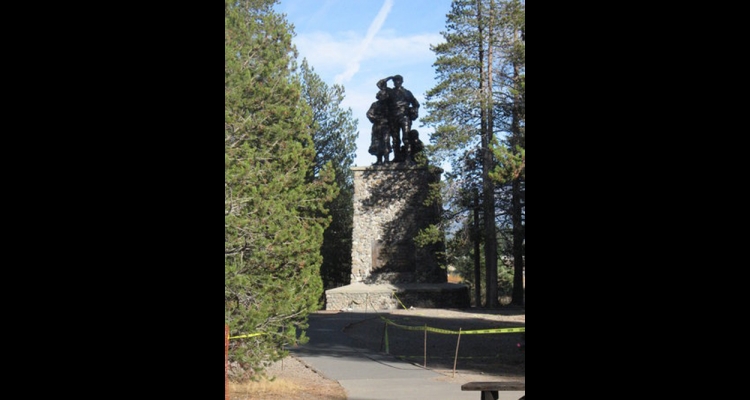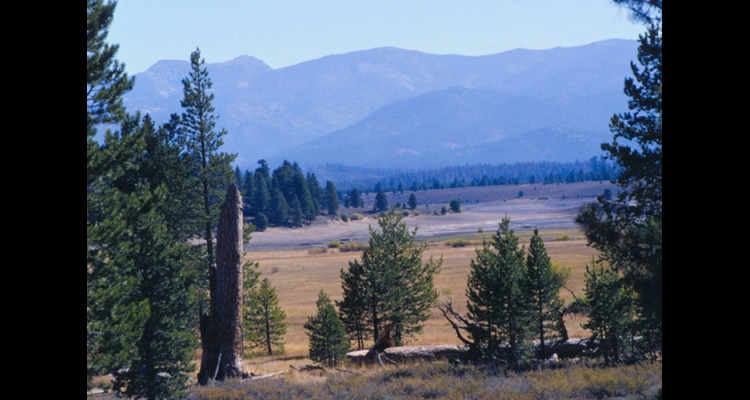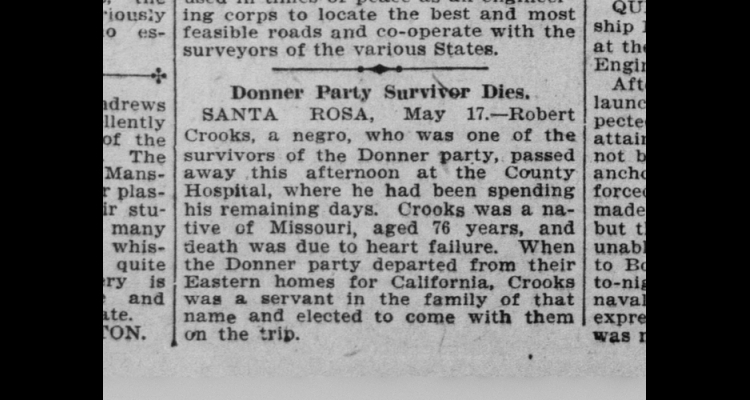Donner Party: Frequently Asked Questions
How many people were in the Donner Party and how many died?
The answer depends on time and geography. Of the ninety-one people associated with the group, including one who left the party and six who died before reaching the Sierra camps, forty-four died and forty-seven survived. Of the eighty-seven emigrants who took the cutoff, plus the two Miwok Indians who joined them in Nevada, only eighty-one were trapped in the mountains because some pioneers had either left the group or died before reaching the Sierras. Of the eighty-one souls trapped in the mountains, thirty-six died and forty-five survived.
Why didn't the Donner Party simply retreat to the Truckee Meadows (the present site of Reno) once they experienced the snowstorms?
In November 1846, the members of the Donner Party made several attempts to continue west and cross the pass, both with and without wagons, but they had to retreat in the face of deep snow and continuing storms. Going back east was dangerous because the Paiutes had harried the party all the way across Nevada. Any travel would have to have been westward, toward the safety of Sutter's Fort. Furthermore, by the time they realized that the deepening snow had made any movement to the west impossible, the trail had closed behind them on the east as well and they were trapped.
Was the winter of 1846-47 the worst ever recorded in the Sierra Nevada?
Weather records show that the winter of 1846-47 was severe, with about twenty storms and a snow depth of approximately twenty-five feet at Donner Lake. Other winters since have generated greater snow depths, including the one of 1951-52 (thirty-seven feet at Truckee) and the record winter of 1889-90 that buried the Sierra under sixty-six feet of snow. The many storms so early in the season were the main cause of the disaster.
Because no archaeological proof of cannibalism has been found, could it be a myth?
Archaeologist Dr. Don Hardesty dug at the Murphy cabin site at Donner Lake in the 1980s without finding gravesites or hard evidence of cannibalism. A team from the University of Oregon dug at a fire pit at the site of the Alder Creek camp in 2004-05, but no cooked human bones were found among the animal bone fragments discovered at that site. But the lack of hard evidence so far does not disprove the many accounts of cannibalism told by rescuers and survivors. While no graves have been found, there are numerous accounts that many of the victims were buried at the lake.
When did the cannibalism start?
The Forlorn Hope party first resorted to cannibalism on December 26, 1846, during their escape from the high camps. The first mention of cannibalism in Patrick Breen's diary is from the entry on February 26, 1847, after the First Relief left the camps.
Was there a single mistake the Donner Party made that can account for the tragedy?
Taking an unproven shortcut and encountering early storms in the Sierra Nevada were the main causes of the disaster, but there were many factors that added up to this great tragedy. The party members elected the patriarchal George Donner as their leader rather than the more able James Reed. They lingered for five days at what is now the Utah-Nevada border while looking for Reed's lost cattle. They rested in the Truckee Meadows, albeit in scattered parties rather than in a large group, before ascending the Sierras. The vanguard of the party also failed to push past the lake on October 31, 1846. Therefore, a cascade of events resulted in calamity.
Others crossed present-day Donner Pass in the winter, so why couldn't the Donner Party make it?
The Townsend-Stephens-Murphy Party crossed from east to west in November 1844 but abandoned wagons at what is now Donner Lake. John C. Fremont's mapping party crossed the Sierra, with great difficulty, in the winter of 1844-45. The exhausted Donner Party was trapped by early snowstorms and lacked the experience and leadership to get across the pass.
Moses Schallenberger survived a winter at Donner Lake in 1844-45 so why did the Donner Party have so much trouble?
Schallenberger, 16, was a member of the Townsend-Stephens-Murphy Party. He helped build and then stayed at what would become the Breen cabin at the lake. Schallenberger was ill and could not go on with the others. He survived by using animal traps to catch small game, and to pass the time he read some of Dr. Townsend's books. The Donner Party members had no animal traps and relied on hunting for game, most of which had already retreated to lower elevations. They also tried unsuccessfully to fish in the ice-bound lake. They lacked the experience to make the best of the extreme winter conditions.
Who was to blame for the Donner Party tragedy?
Many authors have placed the blame for the tragedy on Lansford Warren Hastings, an Ohio lawyer who promoted the ill-advised shortcut now known as the Hastings Cutoff. Hastings led parties over the shortcut in advance of the Donner Party, but James Reed, absent Hasting's salesmanship, was already interested in the shortcut when the Donners and others reached Fort Laramie. The pioneers themselves made the decision to take the risk because they wanted to get to California earlier than the other wagon travelers in order to get the best land.
Did the survivors ever confront Lansford Hastings about his phony shortcut?
It is said that survivor William Eddy vowed to kill Hastings, but nothing ever came of it. Members of the parties that Hastings safely led on the shortcut later voted him captain of their militia unit in the Mexican-American War, so it seems that there was not a lot of animosity felt toward him among those who had not been trapped at the high camps.
What happened to Lansford Hastings after he took his own shortcut?
The lawyer went on to fight in John C. Fremont's California Battalion in the Mexican-American War and later practiced law in San Francisco. For the rest of his life, Hastings promoted various schemes. He suggested the Colorado River as a water route from California to Utah. He volunteered to command a rebel army that would take California for the Confederacy during the Civil War. He eventually died in the Virgin Islands while conducting former Confederates to Brazil, where he dreamed of setting up a republic. Historian Will Bagley has written that Hasting's life demonstrates what the Greek philosopher Heraclitus once noted: “Character is fate.”
Article Locations
Related Articles
None at this time.




